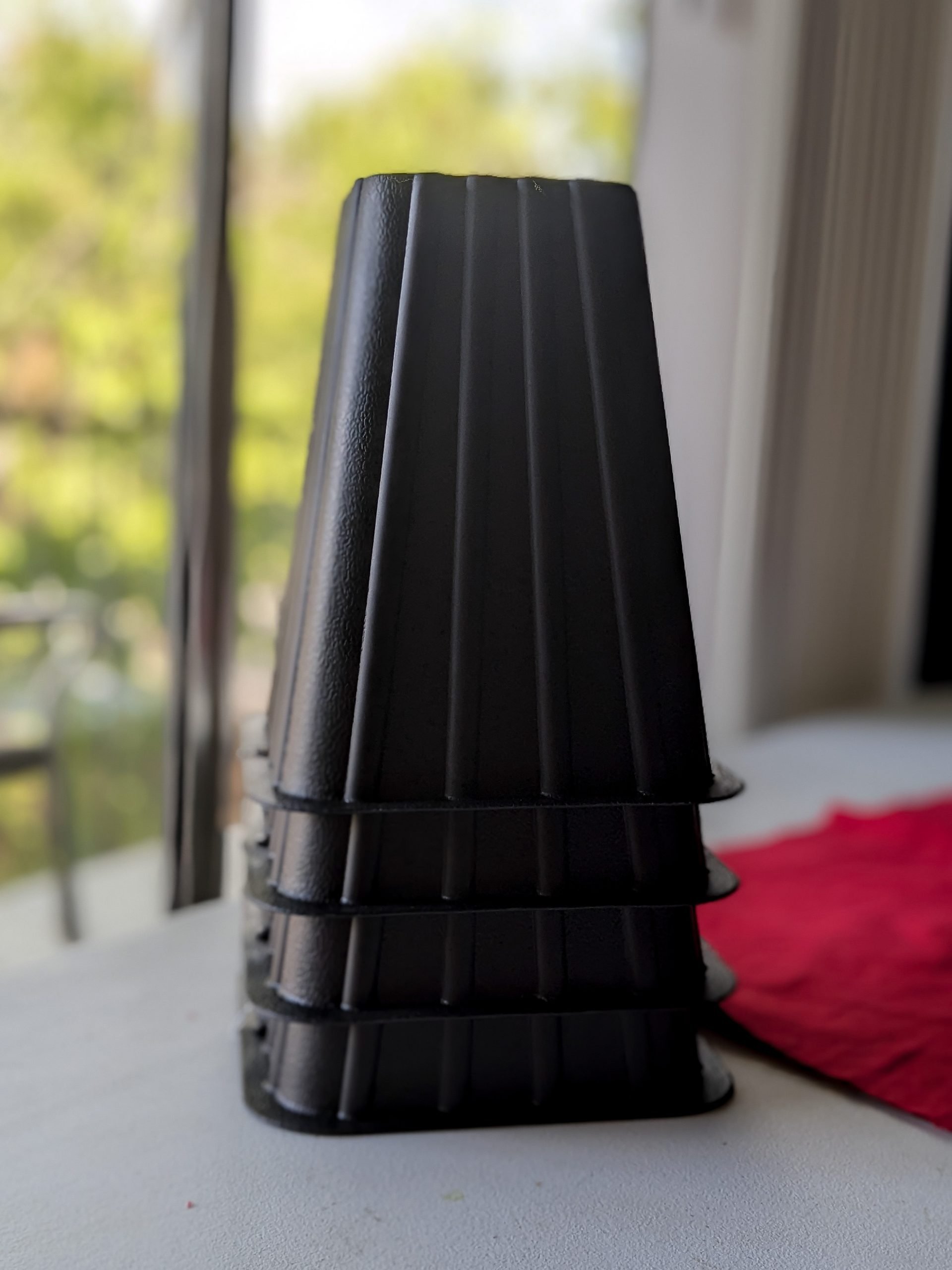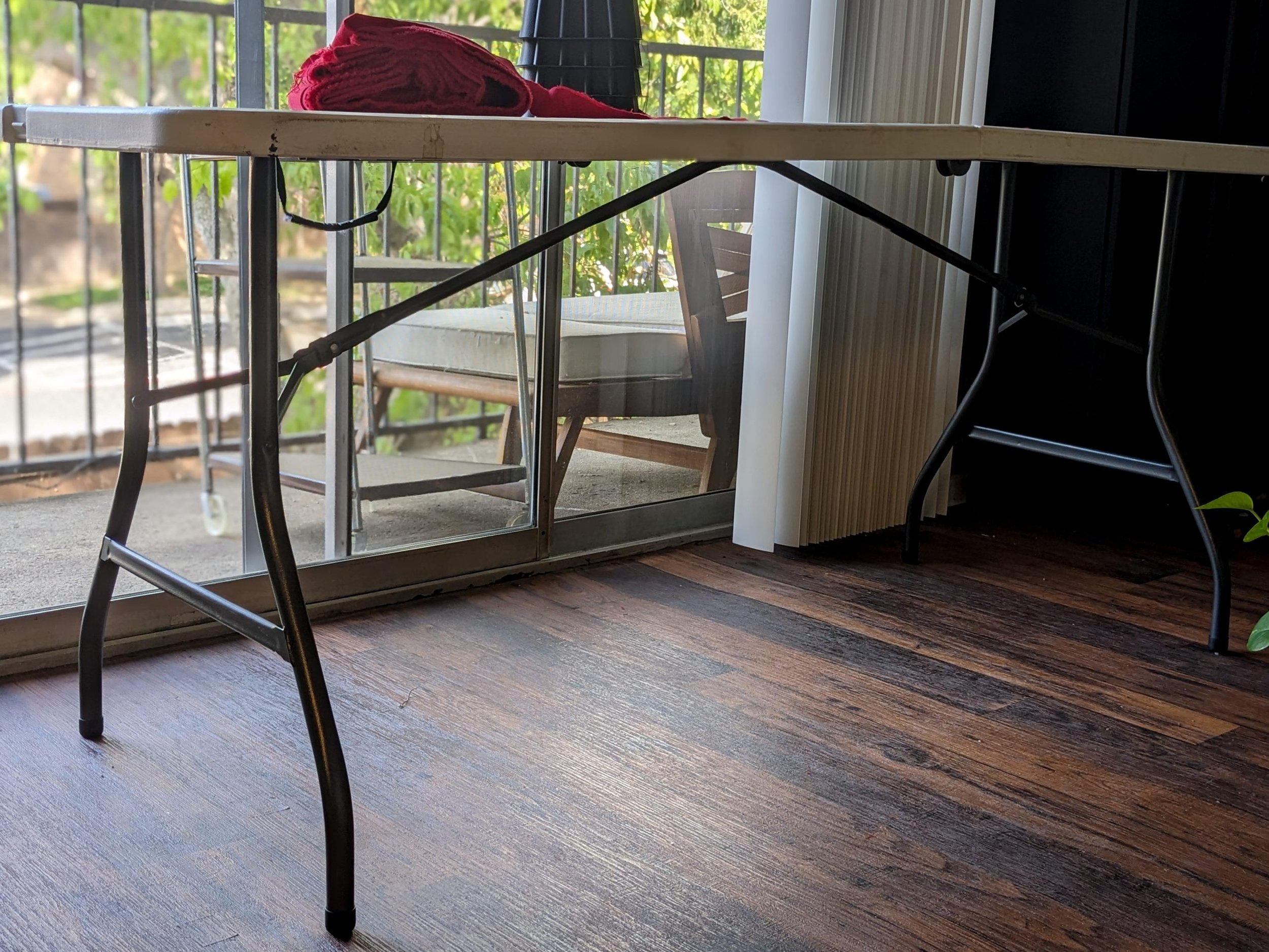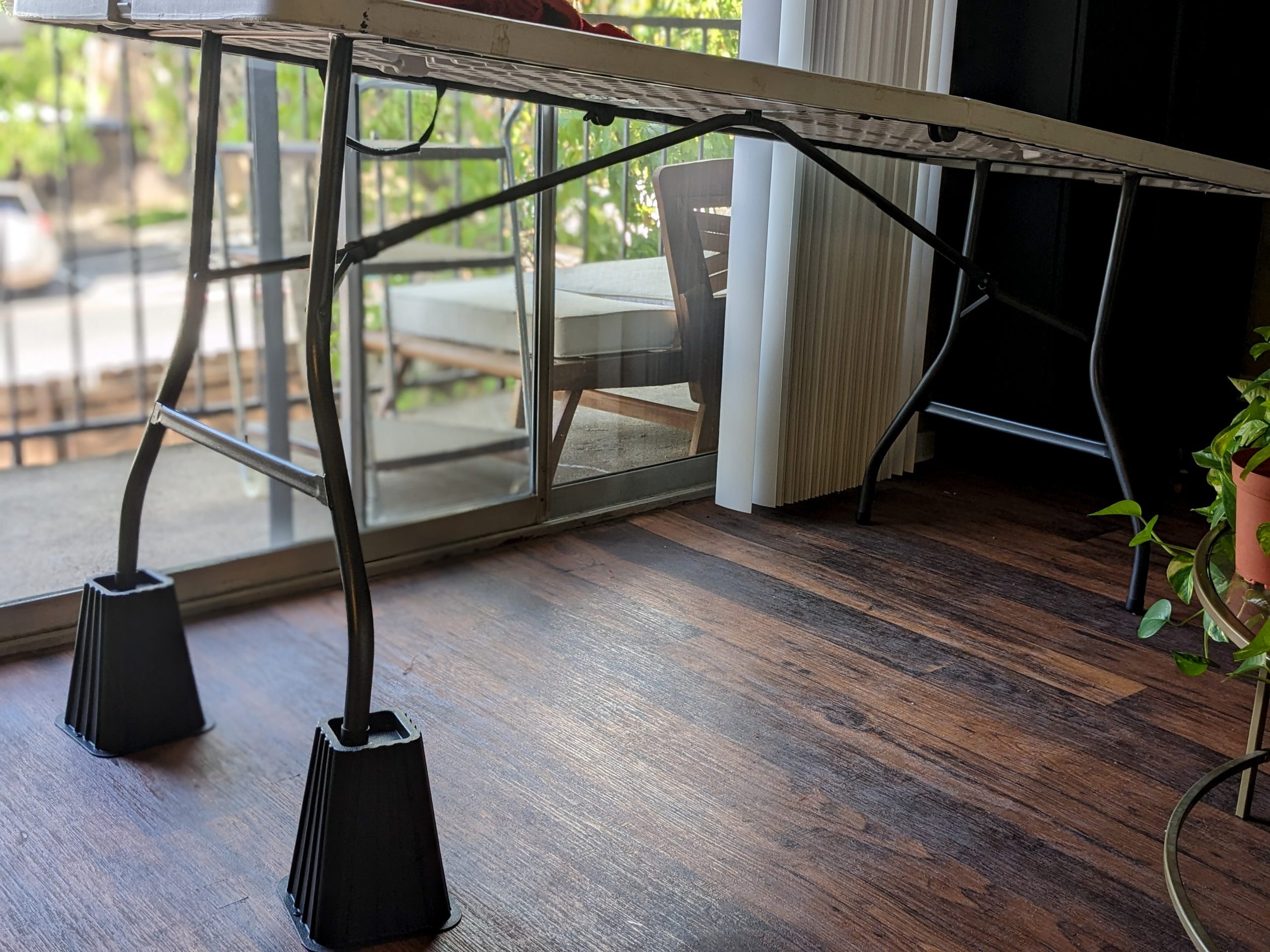Maximizing Space: Temporary Setup for a Portable Cutting Table
Many of us don’t have the privilege of having a dedicated space for our hobbies, so often we must make the spaces we do have multi-functional. For me, I call my living room my atelier. There may be a sofa there (which I’m thinking about changing) but its primary function is to serve as my creative space for all of my hobbies and interests.
My most active hobby is sewing, but having a cutting table ready to access 24/7 would make the space feel cramped. I thought about using my dining area for instead but it turns out I really enjoy having a dedicated spot to eat and socialize when friends come over. For years I’ve used one tried and true solution that’s low tech and relatively affordable.
It’s a folding table. I’m not breaking any barriers here but a folding table that folds in half for storage and furniture risers to bring it to a comfortable height make all the difference. Cutting on the floor works, but it can be hard on the body and depending on the floor surface can make cutting more complicated patterns much more difficult than it has to be.
Advantages of Using a Folding Table
Affordability and Accessibility Folding tables are relatively affordable and readily available at most home and hardware stores.
Space Saving Design A folding table that folds in half for storage saves the most storage space and makes it easy to move around from space to space. It fits in the trunk of most compact cars so it’s handy if you need to move your cutting table to another location.
Versatility Beyond Sewing They obviously make great temporary workspaces for other things not just cutting fabric. I also use it for managing my materials when I’m cutting wood. And it’s also a perfect place to do messier projects that could stain or permanently damage my dining table.
Storage Potential For a semi-permanent solution, the space underneath can be used for storage. Which is where I once stored my fabric and tools when I lived in a space where I could have a dedicated setup.
Considerations To Keep In Mind
Width Limitations Most folding tables aren’t wide enough to accommodate at 45” wide fabric, typically the narrowest width of fabric, if it’s not folded in half. This can be challenging if you are cutting larger pattern pieces. With careful pinning you can get around this issue, but some patterns might just have to be cut on the floor. Depending on the risers you use, if you use any, and if your space allows, another solution could be to use two tables side by side.
Surface Durability The plastic surface is prone to nicks, dents, and warping. Depending where you store your table, extreme temperatures can cause the plastic to warp giving an unlevel work surface. You can see that mine doesn't sit completely flat. It wasn't always like this. It may not be a dealbreaker for you if this happens, but it has the potential to make things like matching patterns difficult.
Mobility Considerations Even though the table is lightweight and mostly simple to maneuver, unfolding the legs on some tables and setting it on risers could be difficult for those with certain mobility impairments or disabilities.
Resources
Below is exactly what I have. These are not affiliate links.



